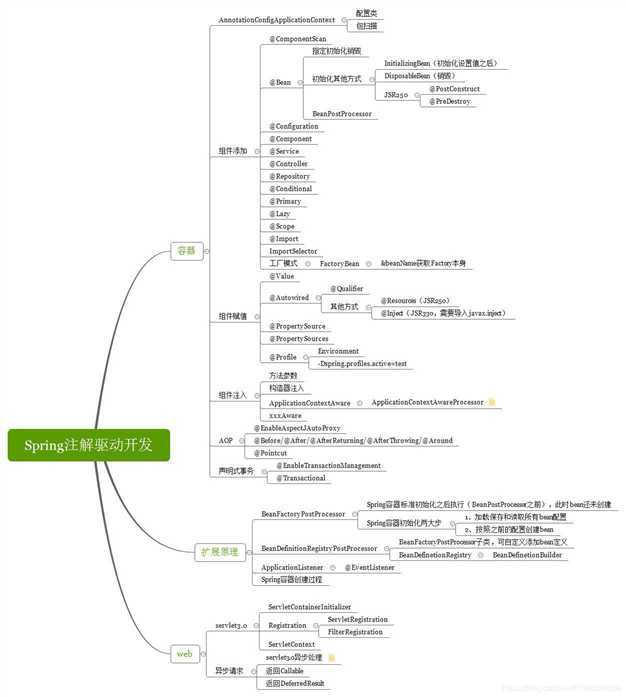2. Spring注解编程模型
主要有四个方面分别是:
元注解(Meta-Annotations)
Spring模式注解(Stereotype Annotations)
Spring组合注解(Composed Annotations)
Spring注解属性别名和覆盖(Attribute Aliases and Overrides)
2.1 元注解(Meta-Annotations)
元注解指一个能声明在其他注解上的注解,如果一个注解标注在其他注解上,那么他就是元注解。根据Java语言规范,注解之间不存在继承关系,因此可以通过元注解来注解到另一个注解达到“派生”的作用,这种“派生”特性需要确保注解之间的属性方法签名完全一致.
2.2 Spring模式注解(Stereotype Annotations)
简而言之Stereotype Annotations就是说明组件扮演的角色,以@Component注解为例,@Service、@Repository、@Controler、@RestController及@Configuration都包含@Component注解,所以包含@Component的功能,同时他们在不同的场景下扮演不同的角色。在Spring Framework 4.x 之前以@Component注解为例,只能识别两层的@Component派生注解,在Spring Framework 4.x 之后可以递归识别多层次的@Component派生注解。
需要另外注意的是Spring在扫描的过程中还会有excludeFilters和includeFilters,排除excludeFilters中的注解,属于includeFilters中的注解将会通过筛选条件(默认初始化时includeFilters会加入@Component)。
还有一点是,处于性能方面的Spring获取底层元数据的方式是通过ASM实现的,而不是通过反射,如ClassReader类,相对于ClassLoader体系,Spring ASM更为底层,读取的是类资源,直接操作的是其中的字节码,获取相关元信息,在读取元信息方面Spring抽象出MetadataReader接口。
2.3 Spring组合注解(Composed Annotations)
其目的在于将多个注解行为组合成单个自定义注解,比如@SpringBootApplication注解由@SpringBootConfiguration、@EnableAutoConfiguration、@ComponentScan等几个注解组成,Spring并没有考虑通过Java反射的手段来解析元注解信息,而是抽象出AnnotationMetadata接口,其实现类为AnnotationMetadataReadingVisitor,从Spring 4.0开始,在初始化过程中AnnotationMetadataReadingVisitor所关联的AnnotationAttributesReadingVisitor采用递归查找元注解,并保存在AnnotationMetadataReadingVisitor的metaAnnotationMap字段中。








